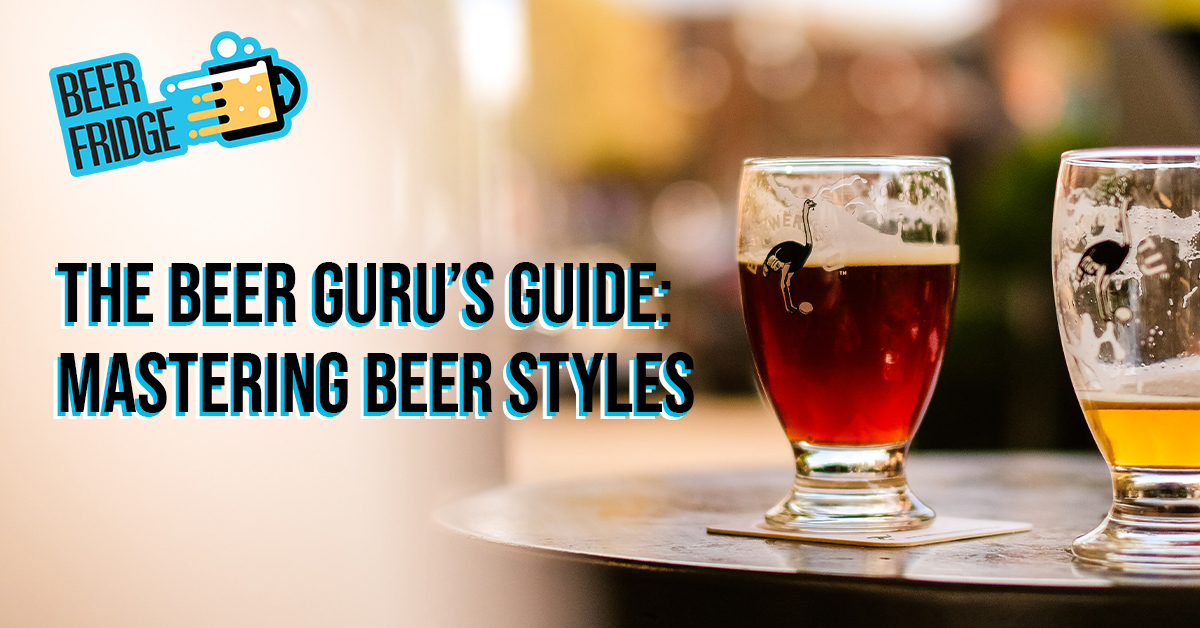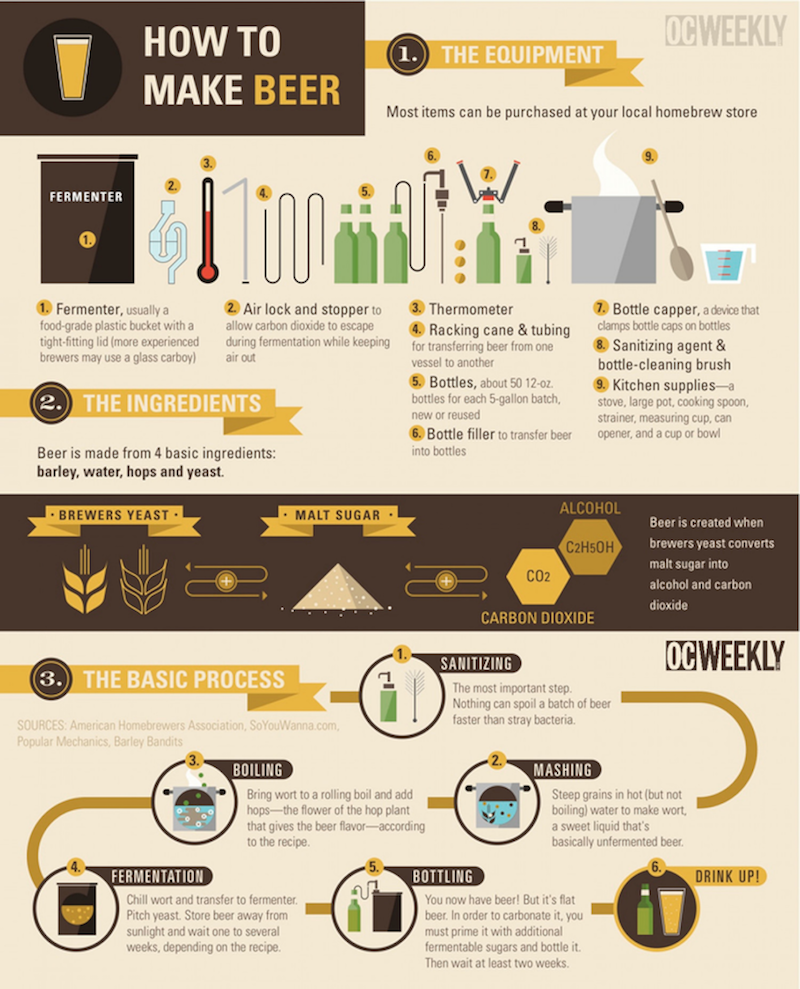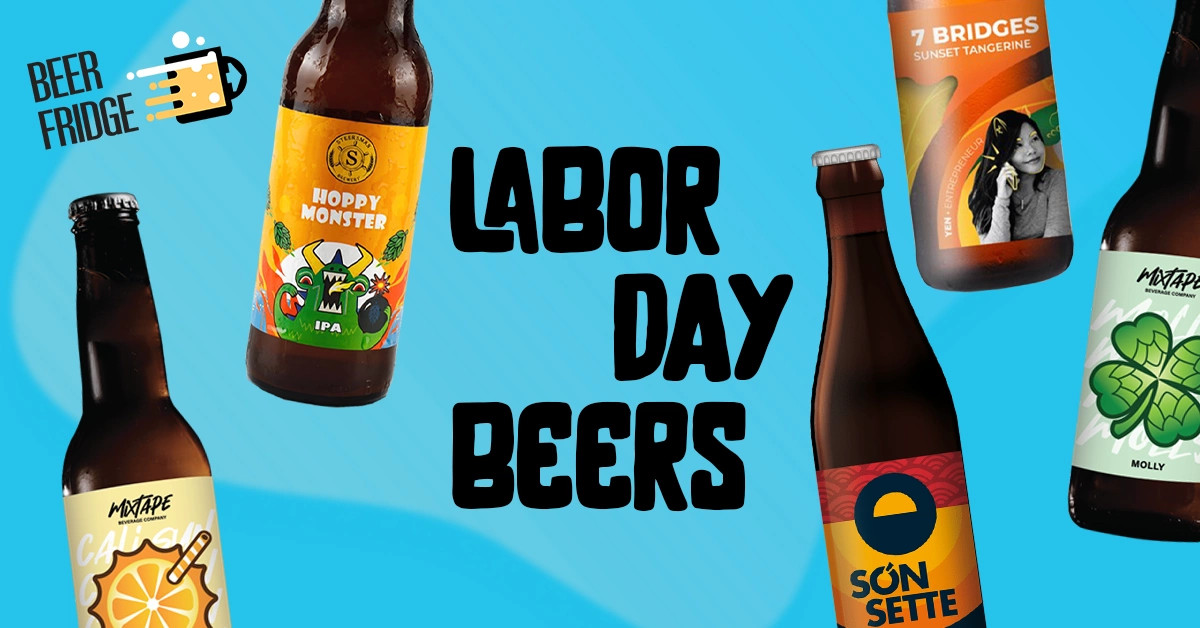The Beer Guru’s Guide: Mastering Beer Styles
Throughout the history of human civilization, it is undeniable that people from all walks of life have enjoyed drinking beer. But what are the facts that make it a timeless drink? Find out more about this beverage with these beer facts.
Although there are many types and classifications of beers in the world, people are most likely to classify it into 2 types: Lagers and Ales.

Lager
Lager is a type of beer conditioned at low temperature. Lagers can be pale, amber, or dark. Pale lager is the most widely consumed and commercially available style of beer.
As well as maturation in cold storage, most lagers are distinguished by the use of Saccharomyces pastorianus, a "bottom-fermenting" yeast that ferments at relatively cold temperatures.
There are many different types of Lagers in the Lager family, such as:
American Lagers
American lager or North American lager is a pale lager that is produced in the United States. The pale lager-style beer originated in Europe in the mid-19th century, and moved to the US with German immigrants.
Today, American lagers are characterized by lighter bodies, little to no bitterness, and low ABV. Their production focuses less on perfecting complex flavors or achieving a high alcohol percentage than on reproducing straw-colored, drinkable consistency.
Pilsner
Pilsner (also pilsener or simply pils) is a type of pale lager. It takes its name from the Bohemian city of Pilsen (Plzeň), where it was first produced in 1842 by Bavarian brewer Josef Groll. The world's first pale lager, the original Pilsner Urquell, is still produced there today.
Pilsners, for instance the Heart of Darkness BiA, are best served cold, at around 3 to 7 degrees Celsius. Pilsners are enjoyed the most when served in a pilsner glass. This tall, narrow glass with a narrow base and wide rim is designed to showcase the beer's clarity and snowy head.
Bock
If you’re looking to drink a beer with a robust history and flavor, consider a traditional German bock. Like many German beer styles, it dates back to the Medieval era and is, historically at least, so much more than just a beer.
Stronger than a typical lager, bock is dark amber in color with robust malt flavors and very light hoppiness. A normal bock falls within the ABV range of 5 to 7 percent and has a very smooth mouthfeel and low carbonation. Substyles of bock vary in flavor and profile: a maibock is paler and has more hops while a doppelbock is heavier, darker, and maltier.
Dunkel
Dunkel, or Dunkles, is a word used for several types of dark German lager.
The word “dunkel” is German for “dark,” and this dark beer style offers beer lovers balanced flavors of chocolate, bread crust and caramel. The dunkel is a classic German lager that craft brewers are fond of brewing and countless people across the world are fond of enjoying.
Ales
Ales are a type of beer produced by top-fermenting yeast that ferments at warmer temperatures and less efficiently than lager yeast. This leaves more malt sweetness and, quite often, a fruitiness or spiciness to the flavor and aroma of the beer.
Ales are a diverse group, too. It includes a variety of styles, from approachable pale ales to bitters to deep, dark stouts.
Pale Ale
Pale Ale is a popular beer style that is hop-forward, has a malty flavor, a golden to amber color, and moderate strength. Brewed with pale malt and ale yeast, Pale Ales bridge the gap between dark stouts and light lagers.
Most Pale Ales are best served at cellar temperature, between 10 and 15 degrees celsius. Some IPAs and American Pale Ales are better just a little colder, but not below 45 degrees. As a general rule, the hoppier the beer, the warmer it should be.
Some of the famous Pale Ale products are Heart of Darkness Dream Alone and the Pale Ale by Pasteur Street Brewing.
Porter
Porter is a style of dark beer that originated in England during the 1700s. With the exception of Baltic porter, porters are brewed with top-fermenting ale yeast. These beers are known for their deep ruby brown to black color, dark malts that often impart chocolate and caramel flavors, and well-balanced, hearty characteristics.
Most ales are best served between 10 and 12 degrees Celsius, and porters follow this line of thought. Keep bottles in a cool place to get these "cellar temperatures" but avoid the refrigerator for the best drinking experience.
Stout
Stout is a dark, top-fermented beer with a number of variations, including dry stout, oatmeal stout, milk stout, and imperial stout.
There is now a huge range of different stouts on the market. What they all have in common is their rich dark color. The darkest stouts can be almost black.
Stouts can be further divided into two main categories. “Milk” or “sweet” stouts, and “dry” stout. The milk stout is sweetened with lactose, derived from – you’ve guessed it – milk. The lactose isn’t fermented by the yeast, so it gives the beer a fuller, sweeter flavor. It was once marketed as a nutritious drink, even recommended for breastfeeding mothers!
Barley Wine
Barley wine beer - not to be mistaken with actual wine - is a strong ale that leans heavily on malt characteristics for flavor. With a wide color range and characteristically high in alcohol content, this is a style that is often aged, as it evolves well over time.
As barley wine beers advance in age, they develop oxidative characteristics, including honey and toffee flavors as well as aromas, darker colors, lessened bitterness and more.
Beer Basics & The art of Brew
Although there are several categories of beers, beer is made from basic ingredients:
• Water (H2O accounts for most of the volume in beer)
• Barley (this is the typical grain used for brewing beer)
• Hops (this influences the flavor and aroma of the beer)
• Yeast (fundamental in the fermentation process, its core purpose in beer is to make alcohol)
1. Water
Why is water so important in beer making?
• Water generally accounts for about 90% of the beer, making it the main ingredient (in terms of volume)
• The role of water is central to ensure consistency across batches and (in the case of larger companies with multiple breweries) across geographies. For instance, this is why you hear that sometimes the same brand of beer tastes differently in different countries. It’s the water.
2. Barley
• With brewing beer, just like when making any alcoholic drink, you’ll need a source of sugar.
• Harvested barley needs to go through the malting process to prepare the starch inside for fermentation.
• When the barley is soaked in water for a few days, these starch-laden carbs are converted into simple sugars through germination.
3. Hops
• Hops are essentially the “balancing agent.”
• The stage at which hops are added directly controls the flavor.
• Hops thrown in early leads to a more bitter beer while you can enhance both flavor and aroma by adding it late.
• If you’ve ever asked yourself what makes beer bitter, it’s the hops.
4. Yeast
• As many old brewers say, they do not make beer. Yeast makes beer.
• Yeast is a fungus, a single-cell microorganism. The yeast eats the simple sugars created in the malting process, converting it into carbon dioxide and alcohol.
• The brewer needs to give this fungus a helping hand by making sure there’s enough food for it to feast on as well as keeping the temperature and light levels just right.
• While yeast can have an effect on the final flavor, its core purpose in beer is to make the alcohol itself.
The Art of The Brew:
Brewing is the production of beer by steeping a starch source (commonly cereal grains, the most popular of which is barley) in water and fermenting the resulting sweet liquid with yeast.
There are several steps in the brewing process, which may include malting, mashing, lautering, boiling, fermenting, conditioning, filtering, and packaging.
The brewing equipment needed to make beer has grown more sophisticated over time, and now covers most aspects of the brewing process.
However, the stage of brew is remained over the time:

With a long history of beer development, it has highlighted the fact that beers are more likely becoming the timeless drink for all walks of life. The art of brewing, though the ingredients have changed throughout the time, has remained over many generations and has been adapted to the new methods of brewing technologies. Nowadays, Lagers and Ales are the most famous beer categories with hundreds of brands and tastes. At Beer Fridge, we are proud to provide you with hundreds of choices of local and international craft beers. Therefore, come and visit us at beerfridge.vn or our physical stores with the address below. Hope to see you one day!
Beer Fridge shop locations:
Saigon: 67 Nguyễn Cừ Thảo Điền, Quận 2, Thành phố Hồ Chí Minh
Hanoi: Lô 15A Trung Yên 3, Trung Hoà, Cầu Giấy, Hà Nội
You can also order online. We deliver ice cold beer to your doorstep within 1 hour.


